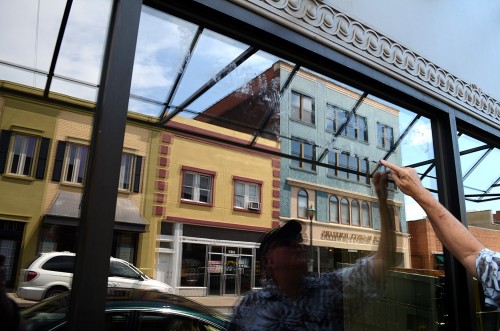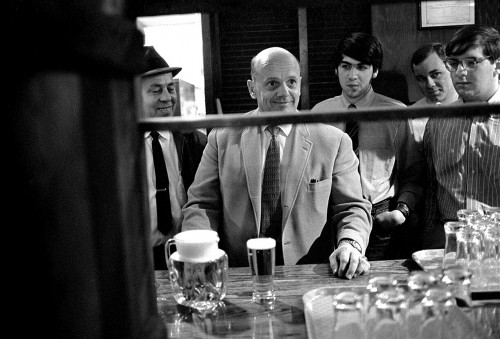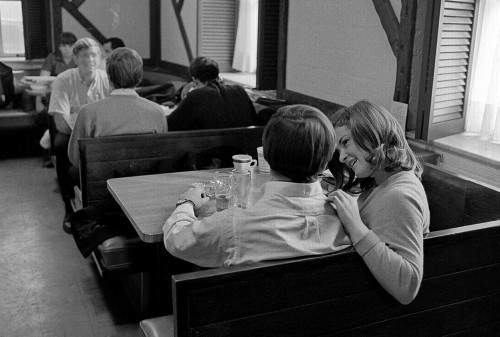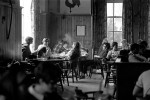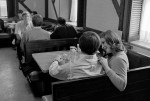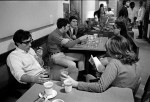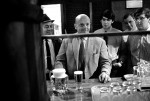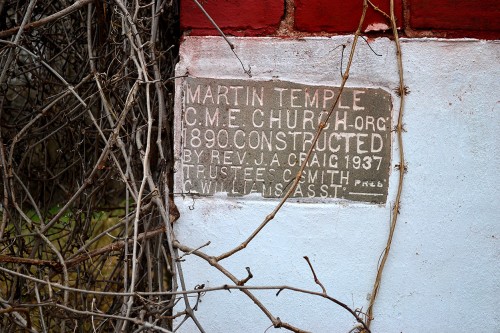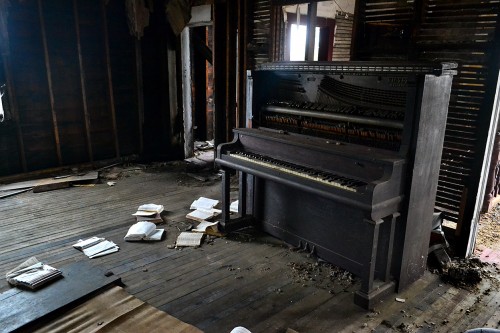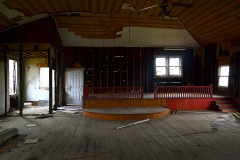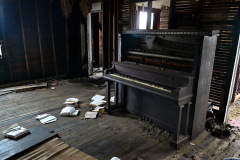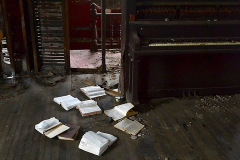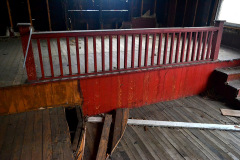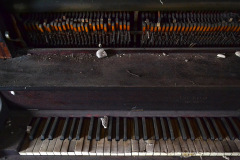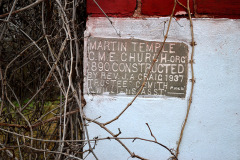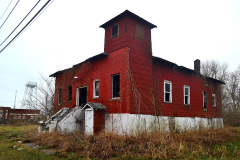 Brother Mark and I rode our bikes from his house near the Botanical Gardens, past the Gateway Arch, and onto the St. Louis Riverfront Trail, over Chain of Rocks Bridge and into Illinois. You can read an account of our 2004 adventure on my bike blog.
Brother Mark and I rode our bikes from his house near the Botanical Gardens, past the Gateway Arch, and onto the St. Louis Riverfront Trail, over Chain of Rocks Bridge and into Illinois. You can read an account of our 2004 adventure on my bike blog.
Chain of Rocks Bridge
 The blog has some neat photos and some interesting history of the Chain of Rocks Bridge, which used to be part of U.S. Route 66. The unusual bridge has a 22-degree bend in it to allow river traffic to have uninterrupted navigation of the river.
The blog has some neat photos and some interesting history of the Chain of Rocks Bridge, which used to be part of U.S. Route 66. The unusual bridge has a 22-degree bend in it to allow river traffic to have uninterrupted navigation of the river.
Quick tour for Curator Jessica
 When I took Curator Jessica to the airport last November, we had some time to kill, so I took her to the North Riverfront Trail where we parked at the Union Electric Light and Power Company. Whenever I park at a trailhead, I scope out the lot for broken glass that indicates that cars have been broken into while their owners were away. Bad guys figure that you’re going to be gone for awhile.
When I took Curator Jessica to the airport last November, we had some time to kill, so I took her to the North Riverfront Trail where we parked at the Union Electric Light and Power Company. Whenever I park at a trailhead, I scope out the lot for broken glass that indicates that cars have been broken into while their owners were away. Bad guys figure that you’re going to be gone for awhile.
The lot passed that sniff test, but I still felt uneasy for some reason. I’ve parked there before and ridden my bike in the area without my hackles going up, so I don’t know what I was picking up.
Floodwall Art Project
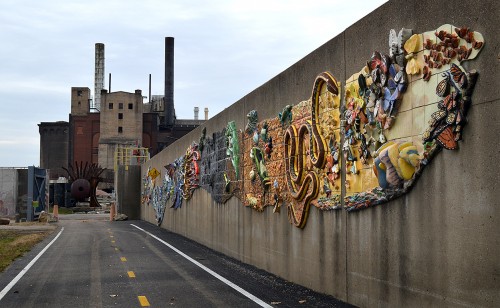 We passed the Floodwall Art Project, a seven-foot tall, 150-foot long tile mural designed by ceramic artist Catherine Magel and created with the assistance of at least 1,500 youth and adults from at least six St. Louis communities. The mural displays the history of the natural world beginning with microscopic life forms, moves into sea life, graduates to earth creatures, then ends with migrating birds.
We passed the Floodwall Art Project, a seven-foot tall, 150-foot long tile mural designed by ceramic artist Catherine Magel and created with the assistance of at least 1,500 youth and adults from at least six St. Louis communities. The mural displays the history of the natural world beginning with microscopic life forms, moves into sea life, graduates to earth creatures, then ends with migrating birds.
Here’s where you can find out more about the Great Rivers Greenway. You can click on the photos to make them larger, too.
I felt uneasy
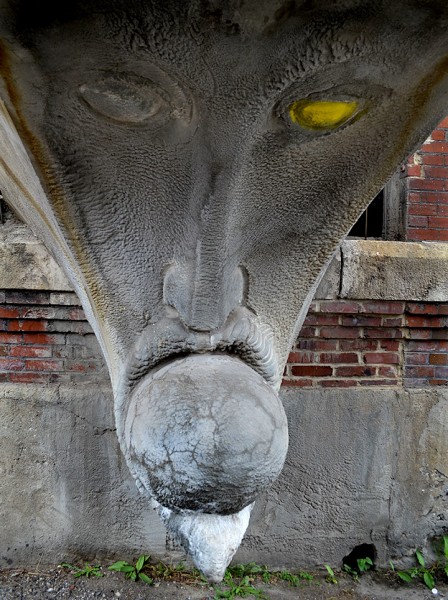 Curator Jessica was thoroughly enjoying herself, but my feeling of unease was growing. We were the only ones around, so there was no obvious reason why I was picking up bad vibes, but I suggested that we head back to the car.
Curator Jessica was thoroughly enjoying herself, but my feeling of unease was growing. We were the only ones around, so there was no obvious reason why I was picking up bad vibes, but I suggested that we head back to the car.
This weird feature on a pedestrian overpass is unsettling, but I don’t think it was what was poking at my lizard brain.
I told Jessica that my misgivings were probably unfounded, but I had learned over the years to trust that instinct that something isn’t as it should be. She gave me her normal eye roll and “crazy guy” look, but didn’t object to moving on. I fully expected to see my car broken into when we got back to the parking lot, but everything was as we had left it.
I’ll have to see if I get the same feeling the next time I go there.

